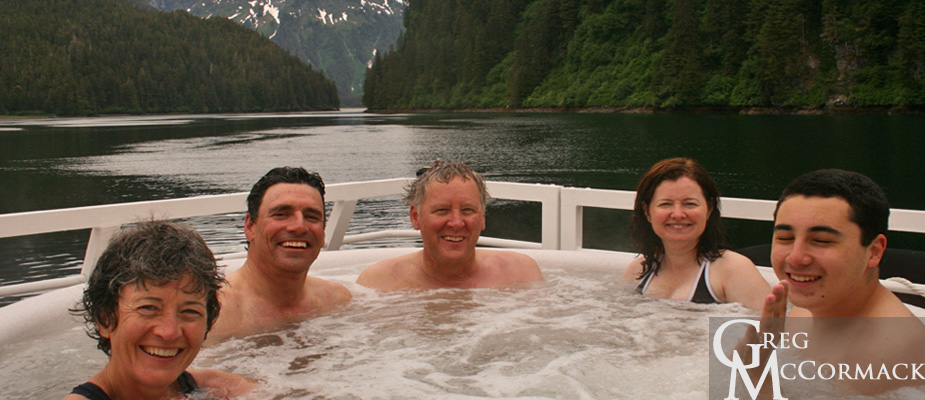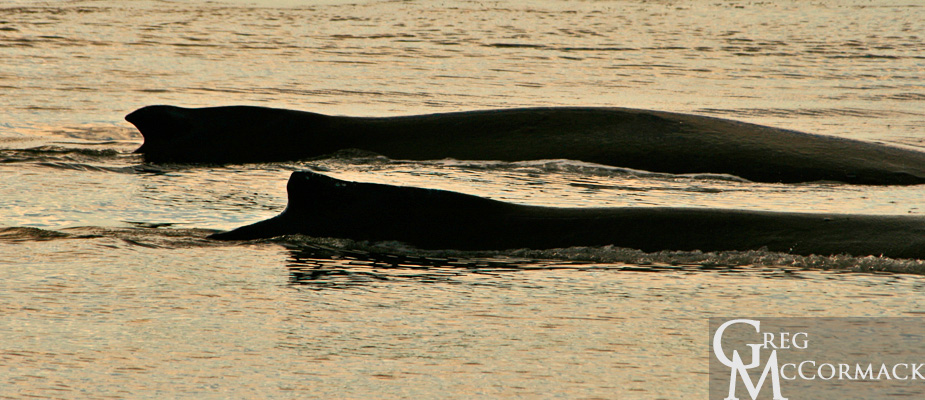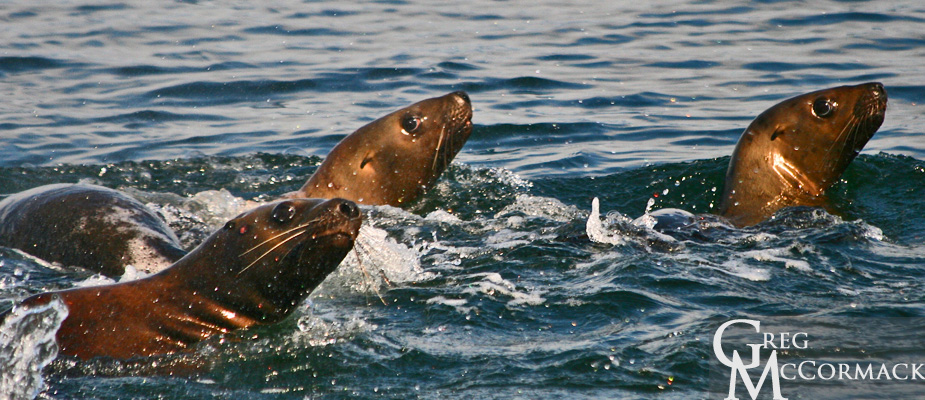Search results
Thursday | June 16
August 2, 2011 by admin
Filed under InnerSea Discoveries
Red Bluff Bay
Snorkeling Expedition and Cruising for Marine Mammals
An early morning scout in a small boat to the entrance to Red Bluff proves fruitful. I find two excellent sites to lead my group of snorkelers. What I look for in a site is an area where tremendous amounts of water cycles by during the ebb and flow of tide-waters. This is found at the entrance to bays and headlands in larger channels. One of the exposed rocky reefs is covered with the scrotum-like bodies of bright orange sea anemones.
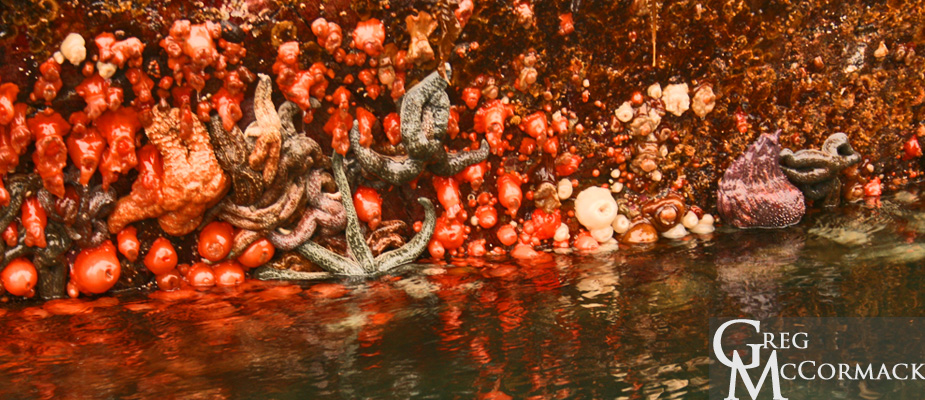
Back in the ship I help the snorkelers get into their 6 mm wetsuits and ask them to carry boots, gloves, hood, snorkel, mask and fins into the waiting mono-hull. We head to the outside of the bay and land on a Caribbean-like small, white-sand beach! Starfish (not really fish, better to call them sea stars!) are everywhere, exposed by an extremely low tide.
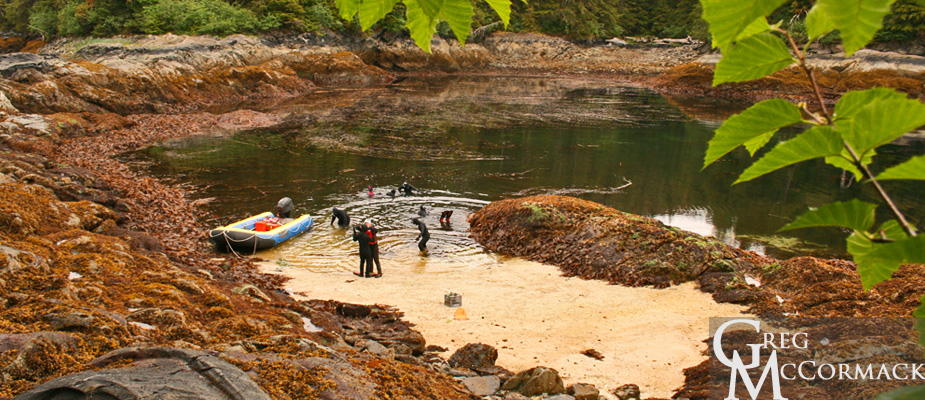
I lead everyone across a small bay through thick kelp forests of Laminaria and Nereocystis to more sheer walls of intertidal goodness. Every square inch is covered with moving and attached creatures vying for a niche in these biologically productive waters. I’d have to say, of all the scuba diving and snorkeling I’ve the years in Alaska, this day has to top them all for pure fun.
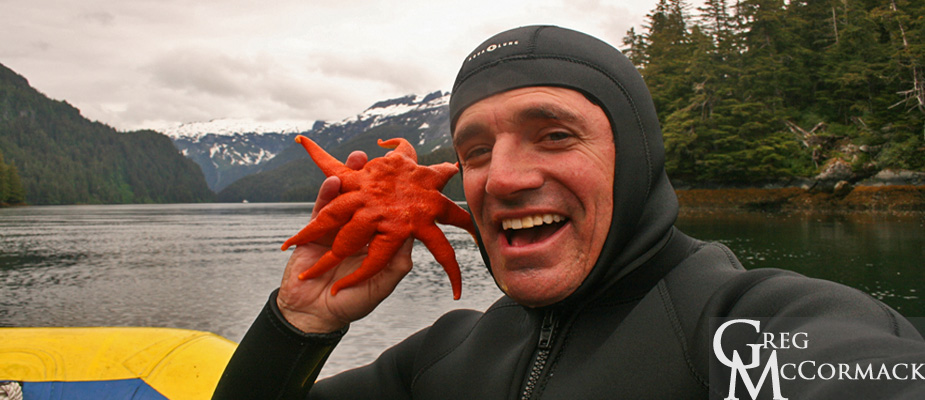
On our way back to the ship, I ask our driver Jen to pull over toward the shore (where a patch of snow comes down close to waters edge) for a group photo. Yes, we are all certifiably crazy.
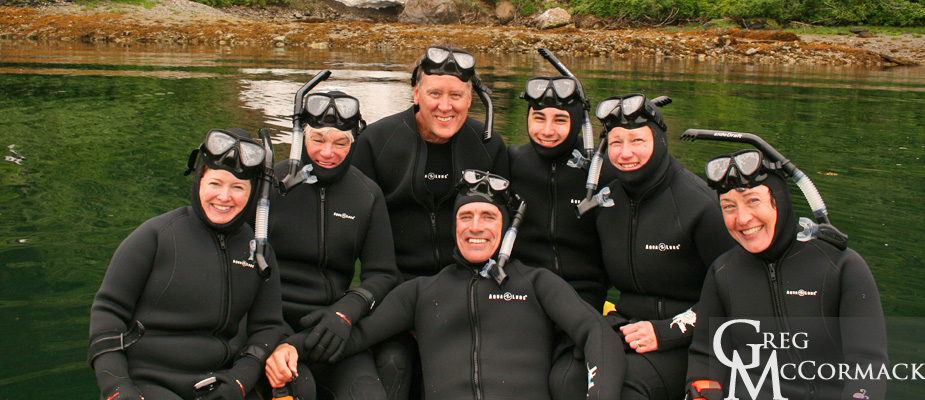
We feel hypo-thermic and take the opportunity to become hyper-thermic in one of our two hot tubs at the stern of the 300-level deck. Oh, the tingling sensations of capillary re-fill were numbing.
In the afternoon, we enjoy spotting several humpback whales, two of them “logging” at the surface for a mid-day nap.
Dozens of Steller’s Sea Lions swim toward our ship from a haul-out site on the Brothers Islands. They are very playful and curious and we excited to snap a few pictures of these animals that are Federally listed as “threatened” with extinction.


